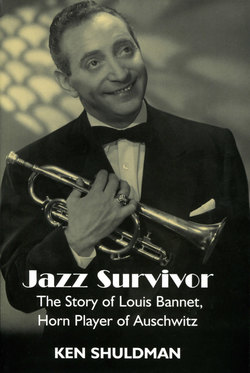Читать книгу Jazz Survivor: The Story of Louis Bannet, Horn Player of Auschwitz - Ken Shuldman - Страница 4
На сайте Литреса книга снята с продажи.
Introduction
ОглавлениеWe drew up in ranks of five, with the musicians. They were nearly all Jews: Juliek, a bespectacled Pole with a cynical smile on his pale face; Louis, a distinguished musician who came from Holland - he complained that they would not let him play Beethoven: Jews were not allowed to play German music.
From Night by Elie Wiesel
Several years ago, a friend visited the Nazi death camp at Auschwitz-Birkenau. Standing alone near the site of where the crematoriums once stood, he heard the sound of a bird singing. How odd, he thought, to hear such a sweet sound in such a place.
Louis Bannet, the ‘Louis’ mentioned in Elie Wiesel’s masterpiece of Holocaust literature, was like that bird.
Jazz Survivor is the remarkable tale of a Dutch Jewish trumpet star who became known as the Dutch Louis Armstrong, a man who blew the Nazis away.
In his life, Louis Bannet played for kings and queens, monsters and madmen, and somehow survived the hell of all hells to become a renowned bandleader and host of one of Canada’s most beloved television shows. It’s a story that includes encounters with a colorful cast of historical figures, such as the legendary jazz saxophone player Coleman Hawkins, the French singing star Edith Piaf, Josef Mengele, and Louis Armstrong himself. Ultimately, though, it is a story about the power of music. As Louis Bannet said, ‘I was stronger than Hitler - I could do whatever I wanted, as long as I had my trumpet in my hand.’ Today that trumpet, a musical testament to survival, is on display at the Museum of Jewish Heritage/A Living Memorial to the Holocaust in New York City.
